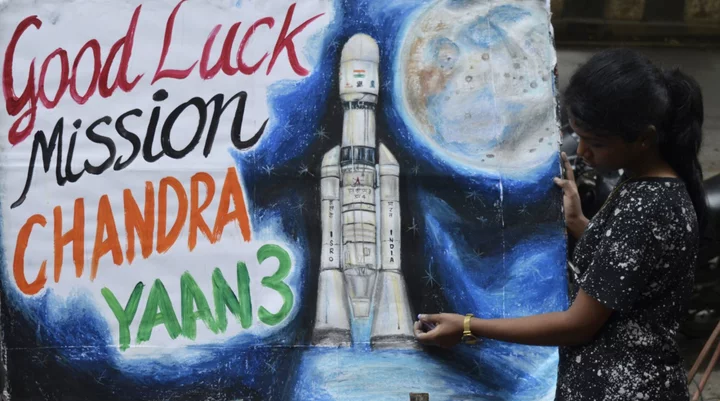India launched an uncrewed mission to the lunar surface, joining the US, China and others in a new moon race.
The Chandrayaan-3 blasted off at 2:35 p.m. local time Friday from India’s main spaceport on Sriharikota, an island off the southern state of Andhra Pradesh, as a crowd of visitors watched. It will spend about six weeks in space before attempting to touch down close to the lunar south pole, near where the nation’s previous moon mission ended in a crash in 2019.
If successful, the rover will conduct experiments on the chemical makeup of the moon’s surface and search for water. The rover will have a life span of one lunar day, which is equivalent to 14 days on Earth.
Only the Soviet Union, China and the US have made successful moon landings, and only NASA has sent astronauts there. India launched its first lunar probe, Chandrayaan-1, in 2008.
The mission highlights Prime Minister Narendra Modi’s focus on bolstering India’s place among the world’s space faring nations. His administration began liberalizing the space sector in 2020, allowing private companies to participate actively.
The US aims to send humans back to the moon before the end of the decade, using landers developed by Jeff Bezos’ Blue Origin and Elon Musk’s SpaceX, and China has plans for its first crewed lunar mission by 2030. Russia, which hasn’t landed on the moon since the end of the Soviet Union, will attempt to send a robotic mission next month. Japan has an uncrewed mission planned for August, too.
India’s new mission comes as the country has made a breakthrough in boosting cooperation with the US in outer space. The country is also in discussions with Japan to work on a moon mission together, ISRO Chairman S Somanath told reporters in New Delhi on Monday.
During Modi’s state visit to Washington last month, India signed the Artemis Accords, a US-backed framework with more than two-dozen other nations — but not China or Russia — governing joint missions and civilian space exploration. NASA and the Indian Space Research Organization also agreed to a joint mission next year that will include sending an Indian astronaut to the International Space Station.
India’s space infrastructure includes 25 Earth observation satellites and about 30 other satellites, Somanath wrote in an article in the May issue of Yojana.
That puts India well behind China, which had 590 operating satellites at the end of 2022, according to the Union of Concerned Scientists. While Chinese rockets have carried more than two dozen people into space since China’s first astronaut, Yang Liwei, went to orbit in 2003, it’s been nearly 40 years since the only Indian to go into outer space, Rakesh Sharma, traveled aboard a Soviet rocket to the USSR’s space station.
ISRO has not yet set a date for the initial flight of its human spaceflight program, called Gaganyaan, but in his article Somanath described the project as “at an advanced stage.”
By signing the Artemis Accords and getting NASA to agree to send an Indian astronaut to the ISS, Modi may reap political benefits as he prepares to ask voters next year to extend his premiership into a second decade, said Konark Bhandari, an associate fellow at Carnegie India, a New Delhi-based affiliate of the Carnegie Endowment for International Peace.
“It would be impressive to have an astronaut of your own in space before the elections,” he said.

